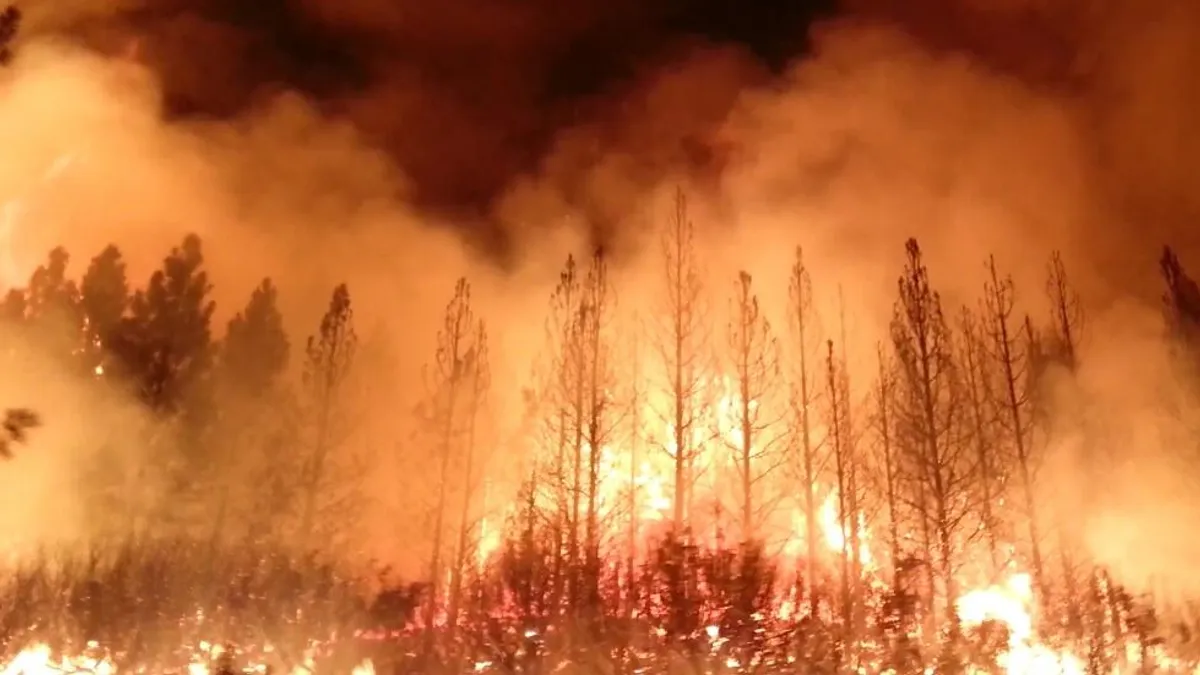Dive Brief:
- Pacific Gas & Electric on Thursday said it would take a $10.5 billion pre-tax charge related to third-party claims in connection with the 2018 Camp Fire, revealing its belief that its equipment was likely the cause of the deadly blaze.
- While the California Department of Forestry and Fire Protection (Cal Fire) has yet to make a formal finding, PG&E said it is "probable" that its equipment will be found at fault.
- PG&E, which filed for bankruptcy while facing billions in liability, issued its quarterly earnings on Thursday and an update on its wildfire safety and financial issues. The utility said the Caribou-Palermo transmission line in Butte County, which may be linked to the Camp Fire, would remain out of service for the time being.
Dive Insight:
Responding to a Wall Street Journal story this week, PG&E disputed a report that it had deferred maintenance on the Caribou-Palermo high-voltage line, which may have led to the Camp Fire. But despite taking issue with the Journal's characterization of planned upgrades, the utility now says its equipment probably ignited the fire.
PG&E said its conclusion is based on information previously reported to the California Public Utilities Commission — Cal Fire's determination of when and where the blaze sparked matches the utility's timeline for when the Caribou-Palermo line relayed and de-energized, when a cable snapped.
PG&E said that based on those facts, the company is "including a $10.5 billion pre-tax charge related to third-party claims in connection with the 2018 Camp Fire," in its full-year and fourth-quarter financial results.
The utility also recorded a new $1 billion pre-tax charge related to the 2017 Northern California wildfires, to go with a previously recorded $2.5 billion charge in the second quarter of 2018. PG&E said the new charge relates to the 2017 Atlas and Cascade fires.
To date, PG&E said it has taken a total of $14 billion in pre-tax charges related to the 2018 Camp Fire and the 2017 Northern California wildfires. But the utility also said that figure "reflects the lower end of the range of estimated losses" the company faces from such wildfires.
"The charges represent a portion of the previously announced estimate of potential wildfire liabilities, which could exceed more than $30 billion," the utility said.
In January, PG&E filed for bankruptcy related to mounting wildfire liabilities. At the same time, it is working to develop a wildfire mitigation plan in advance of the next fire season, to comply with updated state requirements.
According to the WSJ's report, PG&E in 2013 told federal regulators that it was planning extensive maintenance on the Caribou-Palermo transmission line, but the project was never undertaken. The utility said the Journal article "inaccurately describes the work that was proposed," adding that the project was not maintenance-related and the timing was extended "due to additional operational and engineering work."
Now, PG&E says the 56-mile transmission line has been de-energized since December 2018, because preliminary results from enhanced inspections "identified some equipment conditions that require repair or replacement."
"As a result, this entire transmission line will remain out of service until it is verified to be fully safe or decommissioned," PG&E said.
The line runs from PG&E’s Caribou Powerhouse in Plumas County to the utility's Palermo Substation in Butte County.















